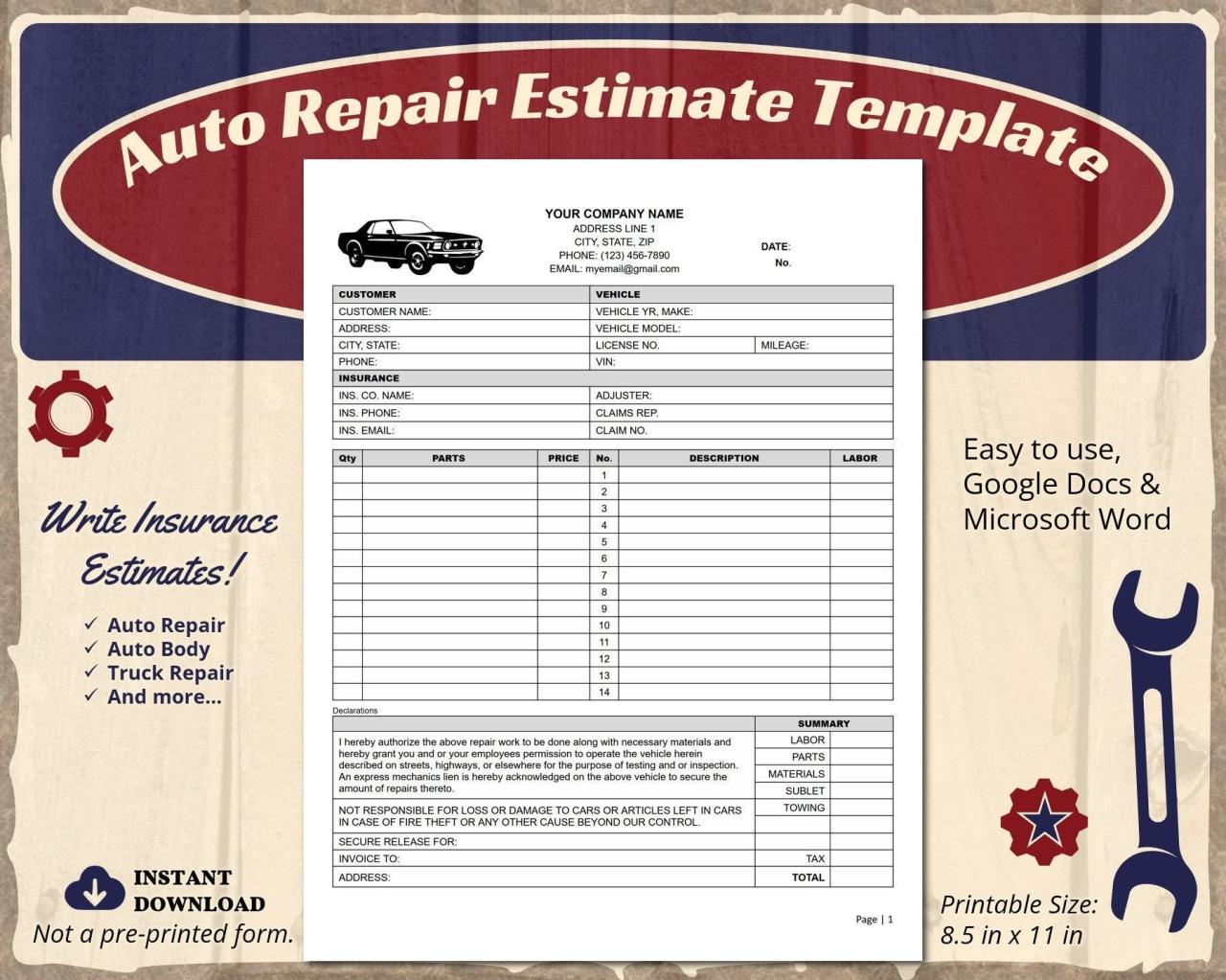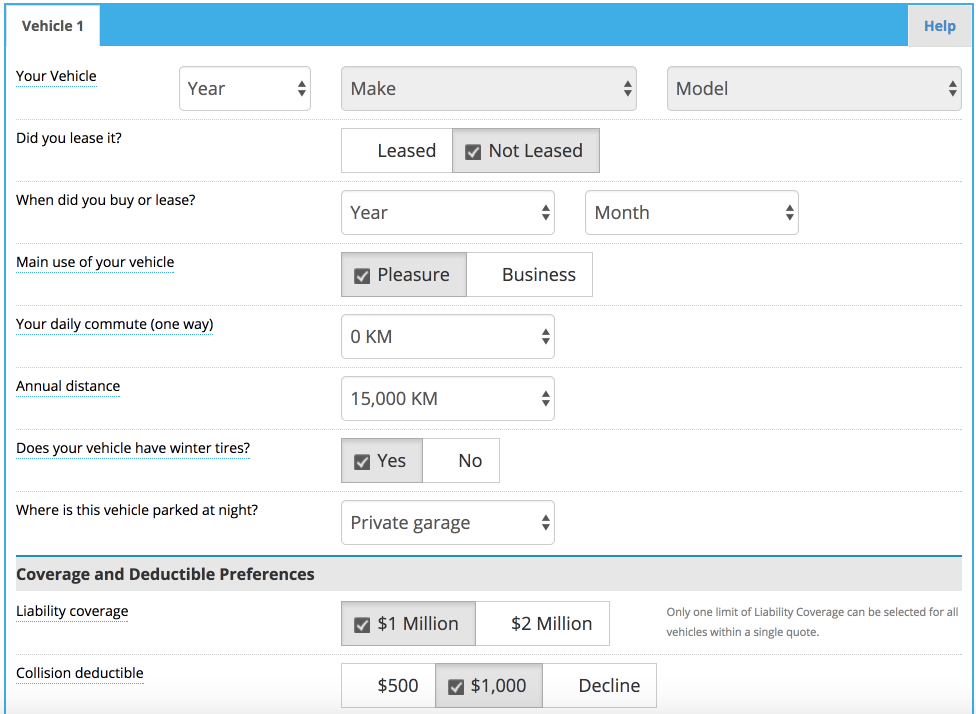Car insurance estimates are crucial for understanding the cost of protecting your vehicle. They provide a snapshot of potential premiums based on various factors, helping you make informed decisions about your coverage.
This guide delves into the world of car insurance estimates, exploring how they work, the factors that influence them, and strategies for obtaining the best possible estimate. From understanding the different types of estimates to navigating the complexities of calculating premiums, we’ll equip you with the knowledge to confidently approach the process of securing car insurance.
Factors Affecting Car Insurance Estimates
Your car insurance premium is not a random number. It is calculated based on various factors that insurers consider to assess your risk. Understanding these factors can help you make informed decisions to potentially lower your premiums.
Factors Affecting Car Insurance Estimates
| Factor Name | Description | Impact on Estimate | Examples |
|---|---|---|---|
| Vehicle Type | The make, model, year, and type of your vehicle. | Affects the cost of repairs, replacement, and theft risk. | Sports cars and luxury vehicles tend to have higher premiums due to their higher repair costs and greater likelihood of theft. |
| Driving History | Your past driving record, including accidents, traffic violations, and driving experience. | Reflects your risk as a driver. | A clean driving record with no accidents or violations will generally result in lower premiums. Conversely, multiple accidents or speeding tickets will increase your premiums. |
| Location | Your residential address and where you primarily drive. | Influences the frequency of accidents and theft in your area. | Urban areas with high traffic density tend to have higher premiums due to a higher risk of accidents. |
| Coverage Levels | The amount of coverage you choose, such as liability, collision, and comprehensive. | Higher coverage levels generally lead to higher premiums. | Choosing higher liability limits will result in higher premiums but provide greater financial protection in case of an accident. |
| Age and Gender | Your age and gender, which are statistically correlated with driving risk. | Younger and inexperienced drivers often have higher premiums. | Teenagers and young adults are generally considered higher risk due to their lack of experience. |
| Credit History | Your credit score, which insurers use as a proxy for financial responsibility. | A good credit score can lead to lower premiums. | Insurers may see a good credit score as an indicator of responsible behavior, which can translate to safer driving habits. |
Interpreting Car Insurance Estimates
Car insurance estimates are crucial documents that Artikel the potential costs and coverage options associated with insuring your vehicle. Understanding the components and details within an estimate is essential for making informed decisions about your insurance needs.
Breakdown of Key Components
An insurance estimate typically includes a comprehensive breakdown of the various elements that contribute to the overall cost of your policy. Understanding these components will help you analyze the estimate and determine if it aligns with your specific requirements.
- Coverage Options: Car insurance estimates usually list the different types of coverage you can choose from, such as liability, collision, comprehensive, and uninsured/underinsured motorist coverage. Each coverage option has its own set of limits and deductibles, which affect the overall premium. For example, a higher liability coverage limit will generally result in a higher premium.
- Deductibles: Deductibles represent the amount you pay out-of-pocket for covered repairs or losses before your insurance kicks in. Higher deductibles generally lead to lower premiums, while lower deductibles result in higher premiums.
- Premiums: The premium is the regular payment you make to maintain your insurance coverage. The estimate will typically show the monthly or annual premium based on your selected coverage options, deductibles, and other factors.
- Factors Affecting Premiums: Several factors influence your car insurance premium, including your driving history, age, location, vehicle type, and credit score. The estimate should clearly Artikel these factors and how they impact your premium.
Interpreting Coverage Amounts and Premiums
Once you understand the key components of an insurance estimate, you can start interpreting the coverage amounts and premiums listed.
- Coverage Limits: The coverage limits specify the maximum amount your insurance company will pay for a particular type of claim. For instance, a liability coverage limit of $100,000 per person and $300,000 per accident means your insurer will pay up to $100,000 for injuries to a single person and up to $300,000 for all injuries in a single accident.
- Deductibles: Deductibles are the out-of-pocket expenses you pay before your insurance coverage kicks in. For example, if you have a $500 deductible for collision coverage and your car is damaged in an accident, you will pay the first $500 in repair costs, and your insurance will cover the remaining expenses.
- Premiums: The premium is the amount you pay to maintain your insurance coverage. It can be calculated on a monthly or annual basis, and the estimate will typically show the total premium for your chosen coverage options.
Identifying Potential Red Flags
While car insurance estimates are generally accurate, it’s essential to be aware of potential red flags or inconsistencies.
- Missing Information: Ensure the estimate includes all the necessary information, such as coverage options, deductibles, premiums, and factors affecting your premium. If any information is missing, it may indicate an incomplete or inaccurate estimate.
- Unrealistic Premiums: Compare the premiums in the estimate with other quotes from different insurers. If a premium seems significantly lower or higher than others, it might be a red flag.
- Hidden Fees: Be sure to check for any hidden fees or charges that may not be explicitly stated in the estimate.
- Limited Coverage: Carefully review the coverage options and limits to ensure they meet your specific needs. If the estimate provides limited coverage, it may not be sufficient for your situation.
Getting the Best Car Insurance Estimate
Finding the most competitive car insurance estimate can save you significant money over the long term. By understanding the factors that influence your premium and employing strategic approaches, you can secure the best possible deal.
Comparing Estimates from Different Providers
It is crucial to compare quotes from multiple insurance companies to find the most favorable rate. Several resources and tools can facilitate this process.
- Online Comparison Websites: Websites like Policygenius, NerdWallet, and Compare.com allow you to enter your information once and receive quotes from multiple insurers simultaneously. This saves time and effort, making it easier to compare prices side-by-side.
- Insurance Company Websites: You can also obtain quotes directly from the insurance company websites. This gives you access to detailed information about each policy and allows you to customize your coverage.
- Insurance Brokers: Independent insurance brokers can provide quotes from a wide range of insurers and help you navigate the process. They can offer personalized advice and negotiate on your behalf.
Negotiating with Insurance Companies
Once you have gathered quotes from different insurers, you can negotiate to secure a better rate. Here are some tips:
- Highlight Your Driving Record: A clean driving record is a significant asset. Emphasize your safe driving history and lack of accidents or violations.
- Consider Bundling Policies: Combining your car insurance with other policies, such as homeowners or renters insurance, can often result in discounts.
- Ask About Discounts: Many insurers offer discounts for various factors, such as good grades, safety features in your car, or being a member of certain organizations. Inquire about these discounts and see if you qualify.
- Be Prepared to Switch Providers: If you are not satisfied with the initial offer, be prepared to switch to another insurer. This competitive pressure can often motivate insurers to provide a better deal.
Car Insurance Estimate Accuracy

Car insurance estimates are valuable tools for comparing prices and understanding potential costs, but it’s crucial to understand that they are just estimations. Various factors can influence the accuracy of these estimates, leading to potential discrepancies between the estimated and actual premiums.
Factors Affecting Estimate Accuracy
The accuracy of car insurance estimates can be affected by several factors, including:
- Incomplete or Inaccurate Information: Providing incorrect or incomplete information about your vehicle, driving history, or other relevant details can lead to inaccurate estimates. For example, if you underestimate your annual mileage, the estimate may be lower than your actual premium.
- Changes in Circumstances: Life events such as moving to a new location, getting married, or adding a new driver to your policy can significantly impact your insurance rates. Estimates based on your current circumstances may not reflect these changes.
- Individual Risk Assessment: Insurance companies use sophisticated algorithms to assess individual risk based on factors like age, driving history, and credit score. These algorithms can vary from company to company, leading to different estimates for the same individual.
- Hidden Fees and Surcharges: Estimates may not always include optional coverage, fees, or surcharges that can add to the final premium. These additional costs can be significant and can lead to surprises when you receive your final policy.
- Market Fluctuations: Insurance premiums are influenced by factors like inflation, competition, and claims trends. Estimates may not reflect these fluctuations, leading to discrepancies between the initial estimate and the final premium.
Potential Differences Between Estimated and Actual Premiums, Car insurance estimate
The difference between estimated and actual premiums can be significant, depending on the factors mentioned above. For example, if you provide inaccurate information about your driving history or fail to disclose a recent traffic violation, your actual premium may be higher than the initial estimate.
Minimizing the Risk of Surprises in Final Premiums
To minimize the risk of surprises in final premiums, it is important to:
- Provide Accurate Information: Be honest and thorough when providing information about your vehicle, driving history, and other relevant details. This ensures the estimate is based on accurate data.
- Review the Estimate Carefully: Pay close attention to the details of the estimate, including any optional coverage, fees, or surcharges. Ask clarifying questions if anything is unclear.
- Compare Quotes from Multiple Insurers: Get quotes from several insurers to compare prices and coverage options. This helps you identify the best deal based on your individual needs.
- Read the Policy Documents: Before accepting a policy, read the policy documents carefully to understand the terms and conditions, including any exclusions or limitations.
Last Point

By understanding the nuances of car insurance estimates, you can effectively navigate the process of securing the coverage you need at a price that aligns with your budget. Remember, research, comparison, and negotiation are key to achieving the best possible estimate. Armed with this knowledge, you can confidently approach the world of car insurance, ensuring your vehicle is protected and your financial interests are safeguarded.
Getting a car insurance estimate can be a quick and easy process, but it’s often beneficial to explore ways to save. Bundling your home and auto insurance with the same provider, like through bundle home and auto insurance , can lead to significant discounts.
These savings can then be factored into your overall car insurance estimate, potentially lowering your monthly premiums.
